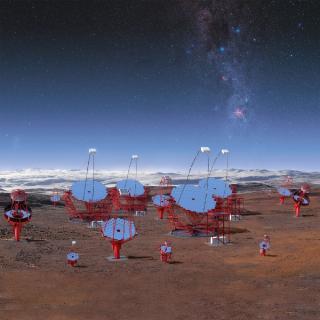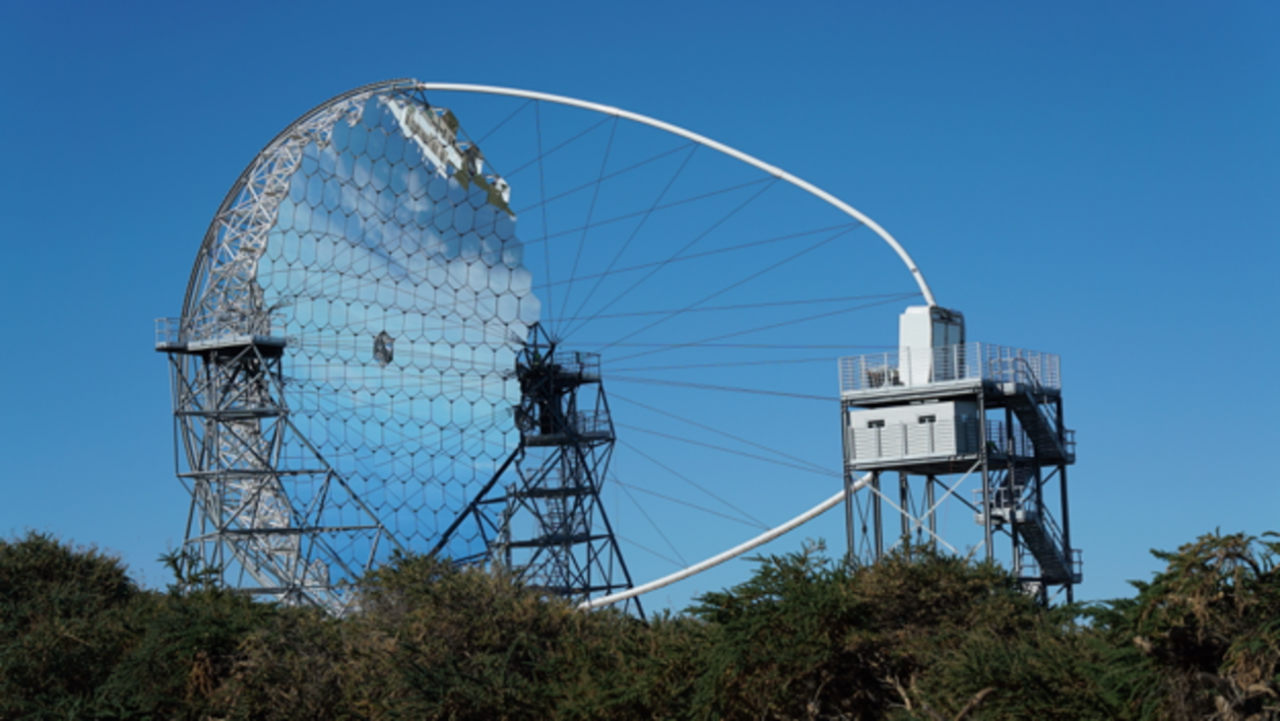General
El Grupo de Astrofísica de Partículas del IAC participa activamente en tres grandes colaboraciones internacionales de astrofísica de muy altas energías: AMS-02 (Alpha Magnetic Spectrometer), los telescopios de radiación Cherenkov MAGIC I y II y el Cherenkov Telescope Array Observatory (CTAO). Además, participamos en el ASTRI mini-array, el experimento de rayos gamma Fermi-LAT y los telescopios ópticos de seguimiento de ondas gravitacionales GOTO.
AMS-02 es un detector de partículas diseñado para operar en el espacio, a bordo de la Estación Espacial Internacional (ISS). Se instaló con éxito en mayo de 2011, y se espera que opere durante toda la vida útil de la misma hasta al menos 2030. Su misión es realizar un estudio de alta precisión y estadística del espectro y la composición de los rayos cósmicos primarios en un amplio rango de energía, así como buscar antimateria primordial y materia oscura de forma indirecta.
La colaboración MAGIC está formada por 20 institutos y departamentos universitarios de Alemania, Armenia, Bulgaria, España, EEUU, Finlandia, Italia, Polonia y Suiza. La colaboración cuenta con dos telescopios de 17 m de diámetro localizados en el Obsevatorio del Roque de los Muchachos (ORM), diseñados para medir la radiación Cherenkov asociada a cascadas atmosféricas producidas por rayos gamma de muy alta energía y localizados en el Observatorio del Roque de los Muchachos.
En el marco de las observaciones de rayos gamma de muy alta energia, el IAC también participa en el consorcio internacional de la red de telescopios Cherenkov CTAO, cuyo objetivo es construir dos grandes complejos de observación en los hemisferios Norte y Sur. El Observatorio del Roque de los Muchachos en La Palma fue seleccionado para albergar el observatorio Norte de CTAO. El primer telescopio de 23 metros del tipo "Large Size Telescope" de CTAO, denominado LST1, fue inaugurado en el ORM en octubre de 2018. Este telescopio ha sido construido por el consorcio "LST Collaboration" de CTAO, que está integrado por 300 científicos de 12 países, donde el IAC tiene un papel muy relevante. Actualmente se está finalizando la puesta a punto del telescopio LST1 y la explotación científica de los datos ya está dando lugar a nuevos descubrimientos. El IAC está actualmente en fase de construcción de 3 telescopios de gran tamaño más (LST2-LST4) en el ORM.
El proyecto ASTRI mini-array está actualmente en construcción en el Observatorio del Teide. Consistirá en un total de 9 telescopios Cherenkov de pequeño tamaño, de los cuales el primero, ASTRI-1, está ya construido y en fase de comisionado.
Miembros
Resultados
Hitos del proyecto en 2024:
- Visión del cielo transitorio con rayos gamma de muy alta energía
- Estudio detallado de la emisión de muy alta energía del pulsar del cangrejo con el LST-1
- La convergencia cosmológica óptica: la luz de fondo extragaláctico de rayos gamma en el rango TeV
- Determinación de la anisotropía de partículas elementales con AMS en la Estación Espacial Internacional
- Estudio multi-longitud de onda de OT 081: modelado de banda ancha de un blazar de transición
- La puesta apunto del primer telescopio ASTRI-1 de la ASTRI mini-array en el observatorio del Teide ha comenzado
- La instalación de las estructuras mecánicas de los telescopios LST2-LST4 de CTAO en el Observatorio del Roque de los Muchachos está muy avanzada
Actividad científica
Publicaciones relacionadas
Noticias






